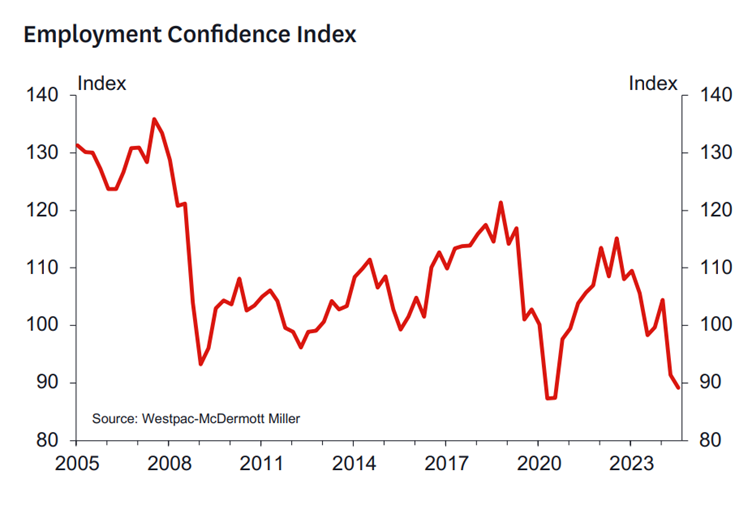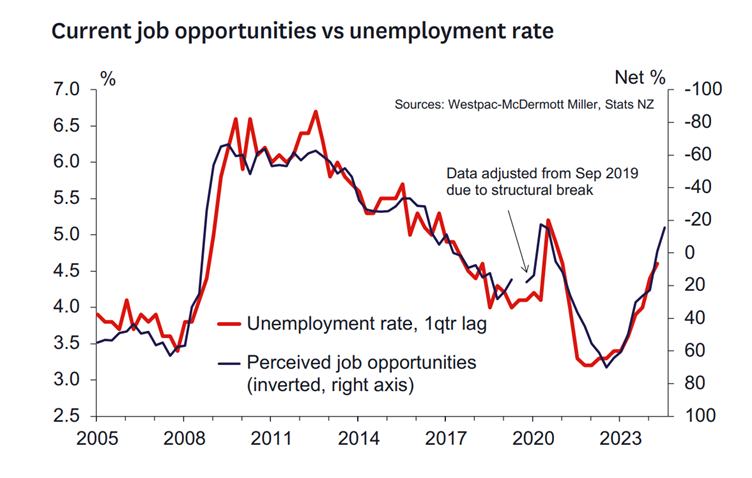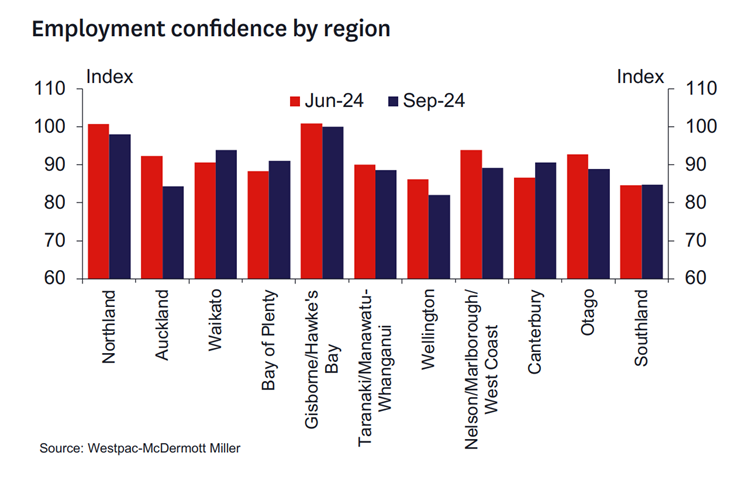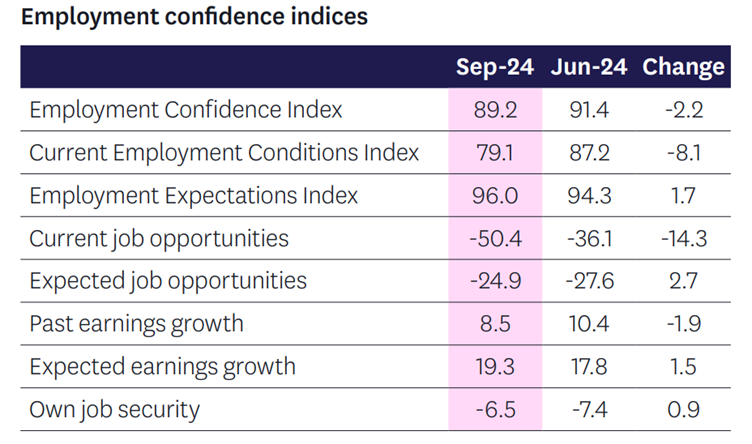It is at levels not seen since 2020

The Westpac-McDermott Miller Employment Confidence Index dropped by 2.2 points, from 91.4 to 89.2, in the September quarter, marking the lowest level since the country began to emerge from the first COVID-19 lockdown in 2020.
A reading below 100 indicates that more New Zealanders are pessimistic about the state of the labour market than are optimistic.
This comes despite falling interest rates boosting consumer and business sentiment, showing that households are taking a realistic view on how long this will take to flow through into better job prospects.

Current job opportunities vs unemployment rate
As was the case in 2020, the biggest factor behind the weakness in employment confidence was the perception that jobs have become much harder to find.
This was biggest driver of the weakness in the latest confidence figures, according to Michael Gordon (pictured above), senior economist at Westpac.
“Job vacancies have been shrinking for some time, and in the last few months we’ve seen a turn to outright job losses.”
Gordon noted that the softening jobs market follows a prolonged slowdown in the New Zealand economy over the last two years.
The latest results suggest that the unemployment rate has continued to rise at a faster pace over the last year.
New Zealand’s unemployment rate jumped to 4.6% for the June quarter, rising from 4.4% from the quarter before and 3.6% a year ago, according to Stats NZ. In actual jobs, 143,000 jobs were lost in those three months.
Westpac now expects it to reach 5% for the September quarter.
Households also remained downbeat on the outlook for job opportunities a year from now, although that measure did tick slightly higher in the September survey. That outlook is probably a fair reflection of how the labour market tends to lag the broader cycle.
“Households recognise that it will take some time for lower interest rates to work their way through, and for businesses to find themselves back in the position of needing to find more workers,” he said.

Employment confidence by region and sector
Employment confidence fell in seven out of 11 regions, with Auckland recording the biggest fall this quarter.
“While Wellington remains the most downbeat region, Auckland is now not far behind,” noted Gordon.
“This is a useful reminder that while public sector cutbacks have been well-publicised, it’s the private sector that has borne most of the pain in the jobs market to date.”
Westpac noted it was sectors such as construction, manufacturing and retail that had seen the most significant job losses to date.
On the positive side, there was a lift in employment confidence in Waikato, the Bay of Plenty and Canterbury.
“While jobs were still seen as harder to come by in these regions, workers were more optimistic about future earnings growth and job security,” Gordon said.

How was the survey conducted?
The Westpac-McDermott Miller Employment Confidence Index summarises responses to five questions: households’ perceptions of current and future job opportunities in New Zealand, their own actual and expected earnings, and expected changes in their own job security.
The questions about current job opportunities and earnings are summarised in the Current Employment Conditions Index, while the questions about the year ahead are summarised in the Employment Expectations Index.
The survey took place over the period from September 1-11, 2024.




